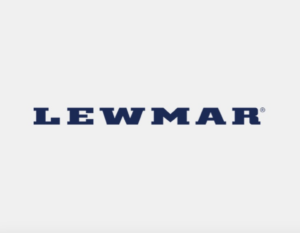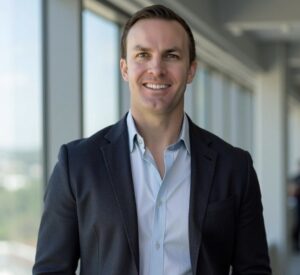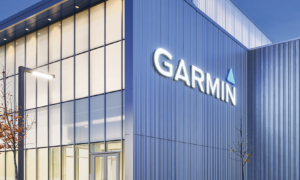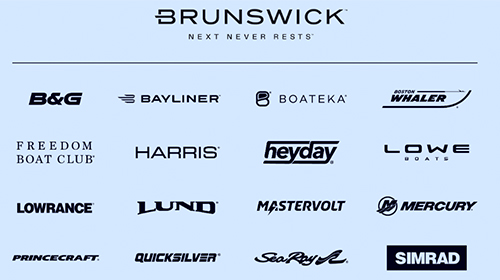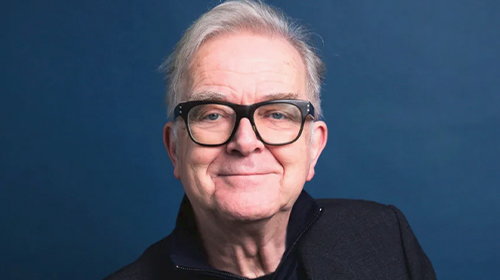The National Marine Distributors Association held its STEP conference July 23-27 at the Sheraton Chicago O’Hare hotel. The annual gathering of distributors, manufacturers and manufacturer representatives facilitated more than 900 meetings by the end of the week.
The mood at the conference was upbeat. “It has been a good season,” said Michael F. Conners, vice president of national sales for Brunswick Corp.’s Marine P&A. “The weather gave us a late start, but the pent-up demand kicked in during the second quarter. In general, two-step distribution is healthy.”
“This has been a record year for us,” added David Karpinsky, president and COO of Taylor Made Products, which was acquired by Lippert Components earlier this year. “The economy is strong, interest rates are low, and while the tariffs may have a dampening effect, we’re still seeing enthusiasm from consumers. Our business hasn’t tailed off at all as we head to the end of summer.”
Enthusiasm echoed across the conference. Don Kirkland, president of MESCO, summed it up nicely: “Business is good.”
Beneath the optimism for the year ahead, there were some undercurrents of concern that ran deeper than the current economic conditions. Richard Wittel, senior director of purchasing and product management at Land ‘N’ Sea, has seen competition for products rise with the steady gains in new-boat sales. “We have been competing with the OEM market for some time for the same products,” he says. “Some manufacturers have had difficult times supplying products to both segments.”
Kirkland says competition from e-commerce giants continues to impact business for two-step distributors and their retail customers. The rise of Amazon, according to most distributors interviewed, seems to be the biggest threat to the two-step business model.
“The e-commerce disruption is profound,” Kirkland says. “Our company has been strong in boatyard supplies and maintenance items, but retailers selling soft goods, electronics or other aftermarket accessories have been negatively impacted. Some face it head-on and price-match when they can, but it puts a lot of pressure on the dealer and manufacturer.”
Laura K. Leon, of Medart Marine, a distributor headquartered in Arnold, Mo., says e-commerce is just the most recent challenge for two-step distribution. “Twenty years ago, some of our biggest concerns were the big-box stores and X-Marts,” she says. “Like Amazon and other direct-to-consumer business models today, they put big pressure on margins. We’re experiencing that same pressure.”
E-commerce seemed to be most on the minds of the distributors. Eugene F. Zelek, an attorney with Taft, Stettinius and Hollister specializing in commerce, gave a presentation at the conference addressing the challenges manufacturers and distributors face from online retailers and “unscrupulous” resellers. Zelek discussed “corrosive price competition” and the difficulties manufacturers and distributors face with constant pressure on margins.
“Resale of products is a growing problem, but there are a range of ways to deal with it,” Zelek told the group. “We think the most practical solution is holistic. Our advice is for manufacturers to control distribution better and make sure there’s enough margin for everyone.”
Some industries are using business practices and discount structures from 30 years ago, added Zelek. These practices are outmoded in the age of Amazon. “With e-commerce, everything is a moving target now,” he says. “But there are ways to mitigate the impact of what’s happening today. Manufacturers need distributors and vice versa, and they both need retailers to sell to the end users. It’s often a matter of finding the approach that works for both the manufacturers and distributors.”
Finding the right approach has allowed the most successful distributors to survive. Leon says the “market seeks its own place,” noting that the big-box stores 20 years ago could not “maintain what they were doing at the prices and margins they were selling their products for.” With the rise of the new model of e-commerce, the big-box marine stores have all undergone significant consolidation and, in some cases, disappeared.
National marine chains such as BoatUS and E&B Marine are now memories, having been acquired by West Marine. Big chains like Gander Mountain and Cabela’s/Overton’s also ran into financial walls in the age of e-commerce, their names saved by Bass Pro Shops and Camping World, respectively, which bought the brands and assets.
Bass Pro and Camping World have kept many Gander and Cabela’s stores open but closed overlapping stores or underachievers. West Marine also closed dozens of low-performing stores under former CEO Matt Hyde, who focused more on superstores with an emphasis on lifestyle products. West’s new management team plans to reinstate the company’s original mission.
In the midst of this flux, two-step distribution looks like the one business model that offers stability to a boating industry that comprises thousands of individual retailers. “We think the model is solid,” says Ben Nicholl, CEO of Donovan Marine. “You don’t see a lot of new players in our sector because of the inventory and infrastructure requirements. It’s a heck of a financial commitment.”
Donovan, the largest privately held marine distributor in North America, has fueled its growth organically and through acquisitions. The New Orleans-based company first bought a distributor in Houston and opened two more facilities in Florida. It then acquired Jacksonville Marine in 1995, which gave it two more locations in Florida and one in South Carolina. It continued to open new facilities across the South, while acquiring competitors in Tennessee, Maryland, Texas and, last year, Cocoa, Fla. Donovan’s largest deal was Southern Marine in 2012, its major competitor, a merger that retained the management team.
“We made a conscious effort to expand at the same time as some of the publicly traded companies,” says John Benton Smallpage III, Donovan Marine president. “We wanted to give the independent dealers an independently owned two-step option.”
Though he doesn’t actually mention Brunswick by name, it’s clear that other two-step distributors see the largest player in the sector as a serious, if not the primary, competitor. From 2003 through 2017, Brunswick acquired Land ‘n’ Sea, Kellogg Marine, Diversified, Bell Recreational Products Group, Lankhorst Taselaar and Paynes Marine Group. Its P&A distribution reach extends across the United States, into Canada and to Europe and Australia. It has hinted that there are other acquisitions in the works.
Some distributors do not view the Brunswick juggernaut as their greatest worry. “Our competitive landscape actually got clearer after they acquired Payne’s,” says Bill Falk, president of Western Marine Co. in Vancouver, British Columbia. “We went from two major competitors to one when Payne’s became part of Land ‘N’ Sea. It’ll be easier to focus on just one competitor now. I’m not suggesting it will be less competitive. It may be harder going against a much bigger guy, but we may have the advantage of being able to react fast.”
Fast reaction times is one element that two-step distributors believe distinguishes them from e-commerce sites. “We have 21 locations across the country and have always focused on next-day delivery,” says Rick Willis, national recreational sales manager at Donovan. “We have 60-odd delivery trucks getting products to dealers, and we’ve been increasing that from next-day to same-day deliveries in some cases. We see that as critical.”
Donovan markets two private-label brands to provide a choice for dealers, while stocking thousands of SKUs ranging from soft goods to engine parts. “Everyone sees the Amazons and other dot-coms offering some high-profile items, but the products on the market now are so much more expensive and complex than 20 years ago,” Willis says. “The consumer needs a knowledgeable dealer to provide technical service, and the dealers need distributors.”
Manufacturers also need distributors, Smallpage says, as the link to the dealer. “We have 70 reps always on the road,” he says. “The manufacturer can’t supply that sort of coverage. We also do spend a lot of time training our dealers. Really, the dealer is demanding all this. Any e-commerce company, with its slim margins, couldn’t provide that level of service.”
At least one distributor was the marine wholesale version of Amazon even before there was an Amazon. CWR Wholesale Distribution, a Tampa, Fla.-based two-step distributor in marine electronics, created a successful online business model for dealers about 18 years ago as the dot-com world was heating up. “When the dot-com bubble burst, we just kept going,” executive vice president Ryan Barber says. “The biggest difference between CWR and most of our competitors is the way we go to market. About 88 percent is online fulfillment, and we ship to consumers on a dealer’s behalf.”
Barber says CWR’s business continued to grow rapidly during the last 15 years, and its online model allows it to be more nimble than traditional distributors. “If they put out a catalog, they tend to be stuck with it for the whole season,” he says. “We can change whole product lines in just one day.”
Most CWR clients are “mom-and-pop” retailers, Barber says, who get carried up to a “level playing field” with the large online retailers and big-box stores. Barber says CWR offers strong customer support with an extensive product line.
“We also have a very large technical services department that lets us provide great technical support,” Barber says. “The bigger online retailers offer little or no support, and little product differentiation. We just showed an electronics manufacturer his product on Amazon. We said, ‘Here’s your product, and here are your competitors listed on the same page.’ He wasn’t too happy.”
CWR has seen its business model emulated and, in some cases, disrupted. “There are probably 20 copycats coming into the marine landscape with a similar business model,” he says. “Fortunately, we were in the online space very early, so we have a lot of traction and search- engine optimization. It takes years to build up that kind of infrastructure.”
Barber says electronics manufacturers retailing directly to consumers on their websites has “created a lot of disruption” for distributors. “It’s starting to become commonplace,” he says. “We’re also seeing manufacturers selling directly through Amazon. They set the manufacturers up with distributor pricing. That confuses the market.”
Despite the recent game changes, Barber says CWR’s original business model is still working. “We had the space to ourselves for a long time, and despite more competitors, our business is still growing,” he says. “We’re always looking for new customers and finding new markets in the RV and outdoors world. We’re pretty optimistic about the future.”
Most of the distributors seemed to think the two-step business model would continue. “We’re seeing nice growth from both multilocation and independent dealers,” Smallpage says. “We’ve adapted our model over time, but our core approach has always stayed the same. It’s really about being of service to the brick-and-mortar dealer.”
This article originally appeared in the September 2018 issue.


